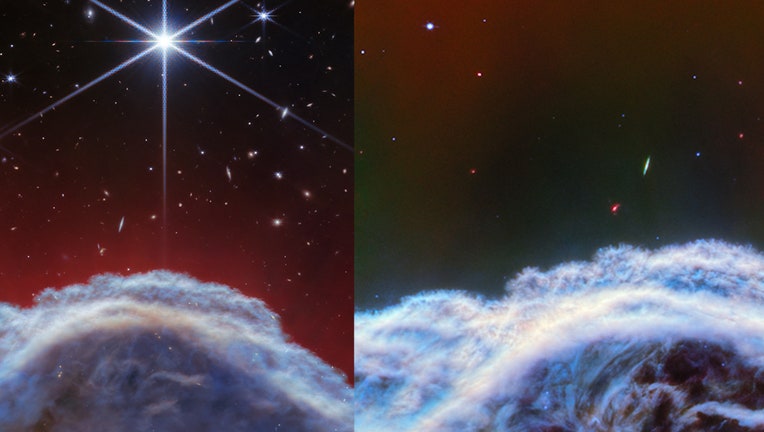NASA captures Horsehead Nebula 'mane' in finest, clearest detail to date

This image showcases views of one of the most distinctive objects in our skies, the Horsehead Nebula. (Credit: NASA, ESA, CSA, Karl Misselt (University of Arizona), Alain Abergel (IAS, CNRS))
NASA’s James Webb Space Telescope has captured one of the clearest images of one of the unique objects in our skies, the Horsehead Nebula.
The images show the top of the "horse’s mane" or edge of this iconic nebula.
The Horsehead Nebula, in the constellation Orion, is 1,300 light-years away. A light-year is nearly 6 trillion miles.
RELATED: Mystery planet? New evidence suggests huge 9th planet in solar system
Discovered over a century ago, its nickname derives from its striking appearance — a wispy pillar of gas and dust that resembles a horse rearing its head.
Webb’s latest infrared images released Monday captured the top of Horsehead in greater detail, illuminating clouds of chilly hydrogen molecules and soot-like chemicals. These glamour shots can help refine astronomers’ understanding of the nebula, which acts as a nursery for big stars to brew.
Horsehead is a favorite target of space observatories including the Hubble Space Telescope. Last year, the European space telescope Euclid took fresh photos of the nebula.
The Associated Press contributed to this report. This story was reported from Los Angeles.

